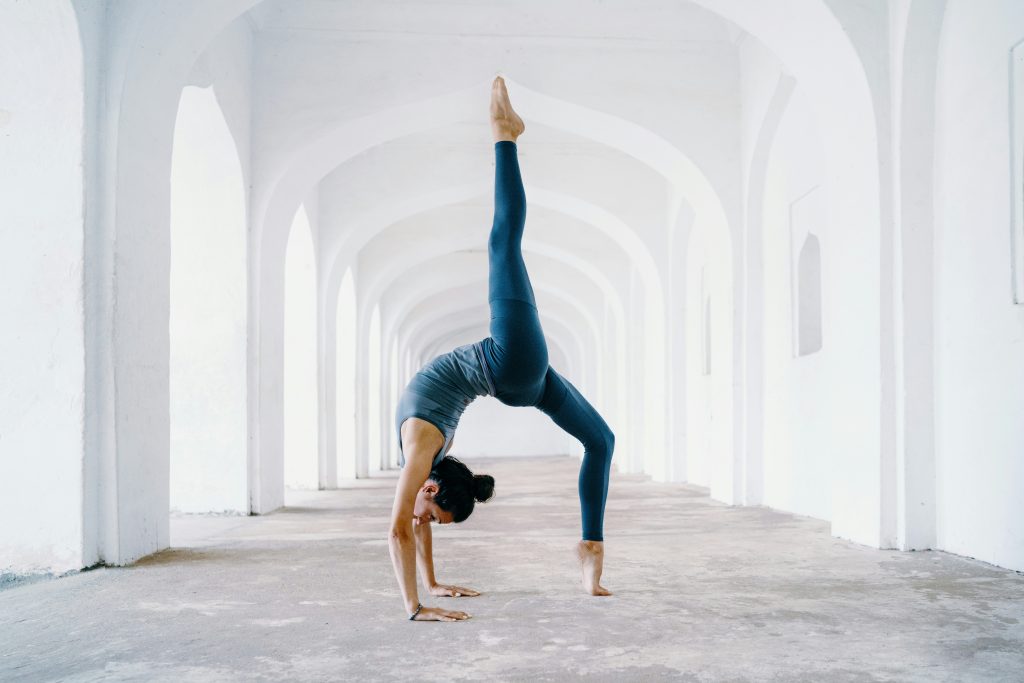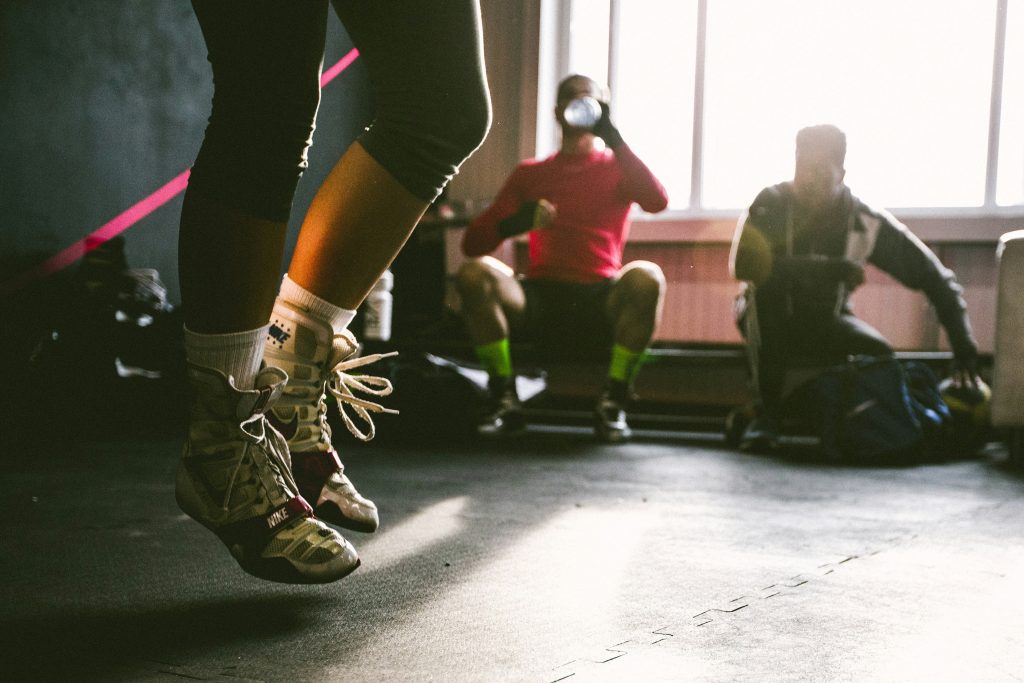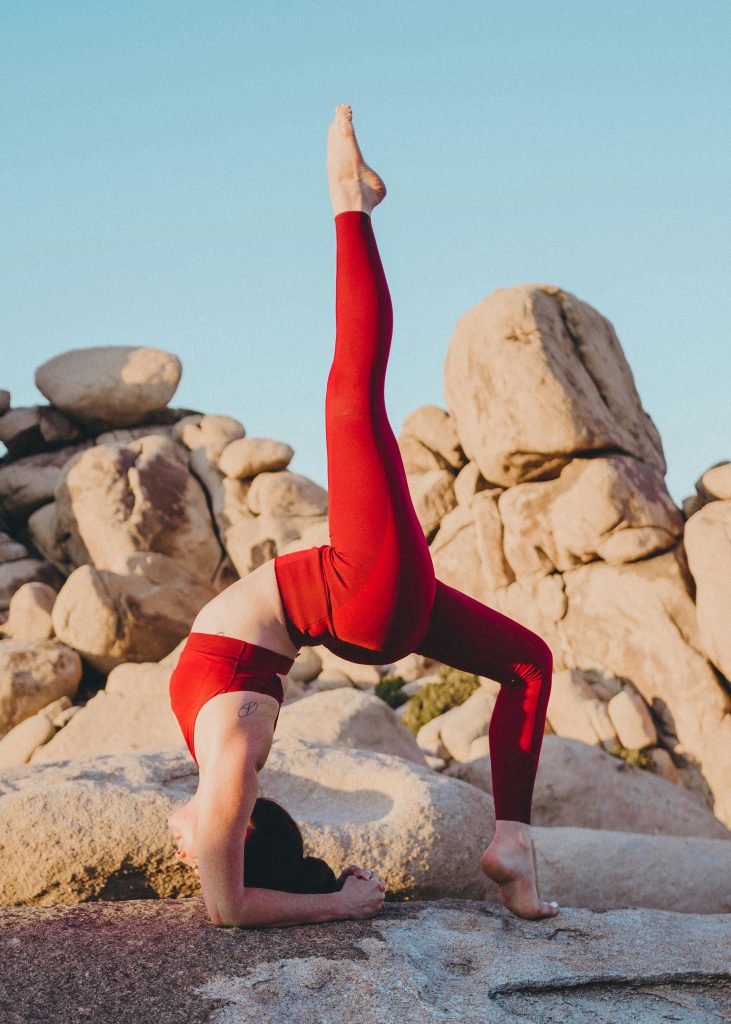Looking to build those coveted six pack abs and strengthen your core muscles? Look no further! In this article, we will explore the most effective stability ball exercises for ab development. Whether you’re a fitness enthusiast or just starting your fitness journey, understanding which exercises can yield the best results is key. So, let’s dive right in and discover the power of stability balls in sculpting those abdominal muscles you’ve always dreamed of!
Benefits of Stability Ball Exercises
Stability ball exercises offer numerous benefits that can improve your overall fitness and health. One of the primary benefits of these exercises is that they help improve core strength. The unstable surface of the stability ball forces your core muscles to engage in order to maintain balance, resulting in increased strength and stability. This is essential for performing various daily activities and sports.
In addition to improving core strength, stability ball exercises also enhance balance and stability. As you perform exercises on the ball, your body is constantly adjusting to maintain balance. This helps improve your proprioception and coordination, reducing the risk of falls and injuries. By challenging your balance in different positions, you can train your body to stabilize in a variety of situations.
Another advantage of stability ball exercises is that they activate multiple muscle groups simultaneously. Unlike traditional exercises that isolate one muscle group at a time, stability ball exercises engage multiple muscles to stabilize your body. This not only helps you build strength but also improves muscular endurance and overall functional fitness.
Furthermore, stability ball exercises can help improve your posture. Sitting on a stability ball instead of a regular chair can promote proper spinal alignment and engage your core muscles. This helps reduce the risk of developing poor posture habits and ensures that your muscles are actively supporting your spine.
Choosing the Right Stability Ball
When it comes to stability ball exercises, choosing the right ball is crucial to ensure safety and effectiveness. Here are some factors to consider when selecting a stability ball:
Consider your height and weight
Different stability balls have weight and height limits, so make sure to choose one that can accommodate your specific needs. Check the manufacturer’s guidelines to ensure the ball can support your weight and provide adequate stability for your height.
Select the appropriate size
Stability balls come in various sizes, typically ranging from 45 cm to 85 cm in diameter. To determine the right size for you, consider your height. A general guideline is to choose a ball with a diameter that allows your knees to be at a 90-degree angle when seated on the ball. This ensures proper alignment and optimal effectiveness during exercises.
Opt for a high-quality ball
Investing in a high-quality stability ball is important to ensure durability and safety. Look for balls that are made from anti-burst material, which means they are designed to slowly deflate if punctured rather than bursting abruptly. This provides an added layer of safety during workouts.
Check for proper inflation
Before using your stability ball, it’s essential to check if it is properly inflated. A ball that is underinflated can affect your stability and increase the risk of injury. On the other hand, overinflating the ball can make it too firm, reducing its stability. Refer to the manufacturer’s guidelines for proper inflation instructions.

Stability Ball Rollout
The stability ball rollout is a challenging exercise that targets the core muscles, particularly the abdominals and obliques. Here’s how to perform it:
Starting position
Begin by kneeling on the floor and place your hands on the stability ball directly in front of you. Your hands should be shoulder-width apart, and your arms should be fully extended. Position your knees hip-width apart and keep your back straight.
Execution
Slowly roll the stability ball forward by extending your arms and allowing your body to move with it. Keep your core engaged and your back straight throughout the movement. Once you feel a stretch in your abs, pause for a moment, then use your core strength to pull the ball back to the starting position.
Variations and modifications
To increase the difficulty of the exercise, you can try performing the stability ball rollout from a standing position. Instead of kneeling, place your hands on the ball while standing and roll it forward. This variation requires more core stability and balance.
If you find the stability ball rollout too challenging, you can modify the exercise by performing it with your knees on the ground. This reduces the amount of bodyweight you have to support, making it more manageable for beginners or individuals with limited core strength.
Tips for proper form
Maintaining proper form is essential for getting the most out of stability ball rollout and reducing the risk of injury. Here are some tips to ensure proper execution:
- Keep your back straight and avoid overarching or rounding. This helps protect your spine and engage your core effectively.
- Engage your core muscles throughout the movement to stabilize your body. This will maximize the benefits of the exercise.
- Control the movement and avoid using momentum to roll the ball. Focus on using your core strength to initiate and control the motion.
- Breathe rhythmically throughout the exercise, exhaling as you roll the ball out and inhaling as you return to the starting position.
By following these tips and practicing proper form, you can reap the full benefits of the stability ball rollout while minimizing the risk of injury.
Stability Ball Pike
The stability ball pike is a challenging exercise that targets the core muscles, particularly the lower abs and hip flexors. It also engages the shoulders and upper back to stabilize the body. Here’s how to perform it:
Starting position
Start by placing your hands on the floor shoulder-width apart and your feet on the stability ball. Assume a push-up position with your body in a straight line from head to toe. Engage your core and keep your arms fully extended.
Execution
Initiate the movement by engaging your core and lifting your hips towards the ceiling. Roll the stability ball towards your hands while keeping your legs straight. Keep your arms stationary and focus on using your core muscles to perform the movement. Once your body forms an inverted V shape, pause for a moment, then slowly lower your hips and roll the ball back to the starting position.
Variations and modifications
To increase the intensity of the stability ball pike, you can add a push-up at the bottom position of the movement. After rolling the ball towards your hands, perform a push-up, then roll the ball back to the starting position. This variation adds an upper body strength component to the exercise.
If you find the stability ball pike too challenging, you can modify it by bending your knees during the movement. Instead of keeping your legs straight, allow your knees to bend as you roll the ball towards your hands. This reduces the amount of work required from your abs and hip flexors, making it more manageable for beginners.
Tips for proper form
To maximize the effectiveness of the stability ball pike and ensure proper form, consider the following tips:
- Engage your core throughout the exercise to maintain stability and control.
- Keep your arms fully extended and your shoulders away from your ears. This helps engage the upper body muscles and promotes proper alignment.
- Avoid sagging or rounding your lower back. Maintain a neutral spine position to protect your back and engage your abs effectively.
- Control the movement by using your core muscles. Avoid using momentum to roll the ball and focus on the contraction of your abs and hip flexors.
By practicing these tips and maintaining proper form, you can effectively target your core muscles with the stability ball pike while minimizing the risk of injury.

Stability Ball Russian Twist
The stability ball Russian twist is a dynamic exercise that targets the oblique muscles and improves rotational strength and stability. Here’s how to perform it:
Starting position
Sit on the stability ball with your feet flat on the floor. Walk your feet forward slightly and lean back until your torso is at a 45-degree angle to the floor. Keep your knees bent and your core engaged. Hold a medicine ball or weight plate close to your chest, or place your hands together in front of your chest.
Execution
Rotate your torso to one side while keeping your hips facing forward. Exhale as you twist, engaging your oblique muscles. Pause briefly at the end range of motion, then rotate to the other side. Continue alternating sides in a controlled and fluid motion.
Variations and modifications
To increase the challenge of stability ball Russian twist, you can lift your feet off the floor, maintaining a “V” position with your legs. This increases the engagement of your core and challenges your stability.
If you find it difficult to maintain balance during the exercise, you can place your feet against a wall for support. This provides stability and allows you to focus on the rotational movement of your torso.
Tips for proper form
Proper form is essential for the stability ball Russian twist to ensure effectiveness and safety. Keep the following tips in mind:
- Engage your core throughout the exercise to stabilize your body and enhance the activation of your oblique muscles.
- Maintain a slight lean back with your torso throughout the movement. Avoid rounding your back, as this can put strain on your spine.
- Rotate your torso from the waist, not just by moving your arms or shoulders. Focus on using your oblique muscles to initiate the rotation.
- Control the movement and avoid using momentum or swinging your arms. Keep the motion smooth and controlled, engaging your muscles throughout.
By following these tips and practicing proper form, you can effectively target your oblique muscles and improve rotational strength with the stability ball Russian twist.
Stability Ball Plank
The stability ball plank is a variation of the traditional plank exercise that adds an element of instability, making it more challenging and engaging for your core muscles. Here’s how to perform it:
Starting position
Begin by placing your forearms on the stability ball, positioning them shoulder-width apart. Step your feet back until your body forms a straight line from head to toe. Engage your core, and make sure your shoulders are stacked directly above your elbows.
Execution
Hold the position for the desired amount of time, keeping your core engaged and your body stable. Focus on maintaining a straight line from your head to your heels. Be aware of any adjustments you may need to make to maintain balance.
Variations and modifications
To increase the difficulty of the stability ball plank, you can lift one leg off the ball or alternate lifting each leg. This requires additional core stability and engages the glute muscles.
If you find the stability ball plank too challenging, you can modify it by performing the exercise with your knees on the ground. This reduces the amount of bodyweight you have to support, making it more manageable for beginners.
Tips for proper form
Maintaining proper form is crucial for optimal results and safety during stability ball plank. Consider the following tips:
- Keep your core engaged throughout the exercise to maximize activation of your abdominal and back muscles.
- Maintain a neutral spine by avoiding any excessive arching or rounding of your back. This helps protect the spine and ensures proper muscle engagement.
- Focus on your breathing and avoid holding your breath. Inhale deeply through your nose and exhale fully through your mouth to maintain a steady breathing pattern.
- Be mindful of your body alignment and adjust as needed to maintain a straight line from your head to your heels. This includes keeping your hips in line with the rest of your body and not allowing them to sag or rise too high.
By following these tips and practicing proper form, you can effectively strengthen your core muscles and improve stability with the stability ball plank exercise.

Stability Ball Bicycle Crunches
Stability ball bicycle crunches are a challenging yet effective exercise for targeting the abdominal muscles, especially the obliques. This exercise combines the traditional bicycle crunch with the added instability of the stability ball. Here’s how to perform it:
Starting position
Sit on the stability ball and walk your feet forward until your lower back is resting comfortably on the ball. Place your hands behind your head, keeping your elbows out to the sides. Lift your feet off the ground and bring your knees to a tabletop position.
Execution
Extend your right leg while simultaneously twisting your upper body to the left, bringing your right elbow towards your left knee. As you do this, your left leg should be bent and your left elbow should be pointing towards the ceiling. Alternate sides by extending the left leg and twisting your upper body to the right, bringing your left elbow towards your right knee. Continue alternating sides in a slow and controlled motion.
Variations and modifications
To intensify the stability ball bicycle crunches, you can lengthen the duration of each repetition or increase the speed of the movement, while maintaining proper form and control. This will challenge your abdominal muscles and elevate your heart rate.
If you find the stability ball bicycle crunches too challenging or if you have lower back issues, you can modify the exercise by keeping your feet on the ground. Instead of lifting your feet off the ball, keep them planted firmly on the floor and perform the bicycle crunches by twisting your upper body.
Tips for proper form
Proper form is crucial for effective and safe stability ball bicycle crunches. Keep the following tips in mind:
- Maintain a neutral spine throughout the exercise by avoiding any excessive rounding or arching of your lower back. This helps protect your back and ensures proper muscle engagement in your core.
- Focus on your breathing and exhale as you twist, engaging your abdominal muscles. Inhaling deeply through your nose and exhaling fully through your mouth will help you maintain a rhythmic breathing pattern.
- Avoid pulling or straining your neck during the movement. Keep a light and relaxed grip on the back of your head, and let your abdominal muscles do the work.
- Keep your movements slow and controlled. Avoid using momentum or swinging your legs to maintain proper form and fully engage your core muscles.
By following these tips and practicing proper form, you can effectively target your abdominal muscles and improve core strength with stability ball bicycle crunches.
Stability Ball Knee Tucks
Stability ball knee tucks are an advanced exercise that targets the entire core, with an emphasis on the lower abdominals. This exercise requires stability and control to prevent the ball from rolling away. Here’s how to perform it:
Starting position
Assume a push-up position with your hands on the floor and your shins resting on the stability ball. Make sure your hands are shoulder-width apart and your body is in a straight line from head to toe. Engage your core muscles and maintain a strong and stable plank position.
Execution
Engage your core and use your lower abdominal muscles to pull your knees towards your chest, rolling the stability ball towards your hands. As your knees reach your chest, pause for a moment, then slowly extend your legs and roll the ball back to the starting position.
Variations and modifications
To make the stability ball knee tucks more challenging, you can perform the exercise with your feet elevated on a bench or step. This increases the difficulty by adding more resistance and requiring greater core strength and stability.
If you find the stability ball knee tucks too challenging or if you need a modification due to lower back issues, you can perform the exercise with your knees on the ground. Instead of a plank position, position yourself on all fours with your hands on the floor and your shins resting on the stability ball. From this position, initiate the movement by pulling your knees towards your chest, rolling the ball with your lower abdominal muscles.
Tips for proper form
Proper form is essential to perform stability ball knee tucks correctly and effectively. Consider the following tips:
- Maintain a strong and stable plank position throughout the exercise. Avoid sagging or arching your lower back, as this can put unnecessary stress on your spine.
- Initiate the movement from your lower abdominal muscles, avoiding excessive strain on other muscle groups. Focus on pulling your knees towards your chest using your core strength.
- Maintain control throughout the movement and avoid using momentum or swinging your legs. Slow and controlled movements engage your core muscles more effectively and reduce the risk of injury.
- Keep your breathing steady and rhythmic. Exhale as you pull your knees towards your chest and inhale as you extend your legs. Consistent breathing helps maintain stability and focus throughout the exercise.
By following these tips and practicing proper form, you can effectively target your lower abdominal muscles and improve core strength with stability ball knee tucks.

Stability Ball Superman
The stability ball superman is an exercise that targets the back extensors, glutes, and hamstrings while also engaging the core. It helps improve back strength and posture. Here’s how to perform it:
Starting position
Start by lying on your stomach with your legs extended and your toes resting on the floor. Position the stability ball under your hips and lower abdomen. Extend your arms forward and rest them on the floor in front of the ball. Make sure your head and neck are in a neutral position.
Execution
Engage your core and glutes, then lift your chest, arms, and legs off the ground simultaneously. Keep your gaze downwards to maintain proper alignment and prevent strain on your neck. Hold the position briefly, then lower your chest, arms, and legs back to the starting position.
Variations and modifications
To increase the difficulty of the stability ball superman, you can add a contraction at the top of the movement. As you lift your chest, arms, and legs off the ground, squeeze your glutes and engage your back muscles for a more challenging contraction.
If you find the stability ball superman too challenging or if you have lower back issues, you can modify the exercise by lifting only the upper body or lower body off the ground separately. By focusing on one area at a time, you can gradually build strength and stability.
Tips for proper form
To perform stability ball superman correctly and safely, keep the following tips in mind:
- Keep your movements controlled and avoid jerking or swinging, especially when lifting or lowering your limbs. This ensures that you are engaging the targeted muscles effectively.
- Focus on engaging your core and glutes throughout the exercise. This helps stabilize your body and prevents excessive stress on your lower back.
- Keep your neck in a neutral position and avoid straining or hyperextending it. Maintain a gaze downwards to maintain alignment and protect your neck.
- Breathe naturally throughout the exercise, inhaling as you lower your body and exhaling as you lift. A consistent breathing pattern helps you maintain control and stability.
By following these tips and maintaining proper form, you can effectively strengthen your back, glutes, and core muscles with stability ball superman.
Stability Ball Reverse Crunch
The stability ball reverse crunch is an exercise that targets the lower abdominal muscles by lifting the pelvis towards the chest. It also engages the hip flexors and requires stability to prevent the ball from rolling away. Here’s how to perform it:
Starting position
Lie on your back with your legs bent and your feet resting on top of the stability ball. Place your arms by your sides, palms facing down, for extra stability. Engage your core and keep your lower back pressed into the ground.
Execution
Initiate the movement by engaging your lower abdominal muscles and lifting your hips off the ground. Roll the stability ball towards your chest by bending your knees and using your abs to pull the ball towards you. Once your knees are close to your chest, pause for a moment, then slowly lower your hips and roll the ball back to the starting position.
Variations and modifications
To increase the difficulty of the stability ball reverse crunch, you can add a pause and a squeeze at the top of each repetition. Once you lift your hips off the ground and roll the ball towards your chest, hold the position for a few seconds, squeezing your abs. This intensifies the contraction and increases the challenge for your abdominal muscles.
If you find the stability ball reverse crunch too challenging or if you need a modification due to lower back issues, you can perform the exercise with your knees bent at a 90-degree angle. Instead of rolling the ball towards your chest, focus on engaging your core to lift your hips off the ground and bring your knees towards your chest.
Tips for proper form
Proper form is crucial for performing stability ball reverse crunches effectively and safely. Consider the following tips:
- Engage your core muscles throughout the exercise to stabilize your body and ensure proper muscle activation.
- Keep your lower back pressed into the ground to protect your spine and engage your abs effectively. Avoid excessive arching or rounding.
- Control the movement and avoid using momentum or swinging your legs. Focus on using your abs to initiate and control the motion, minimizing the involvement of other muscle groups.
- Breathe naturally throughout the exercise, exhaling as you roll the ball towards your chest and inhaling as you lower your hips. A consistent breathing pattern helps maintain control and stability.
By following these tips and practicing proper form, you can effectively target your lower abs and improve core strength with stability ball reverse crunches.





